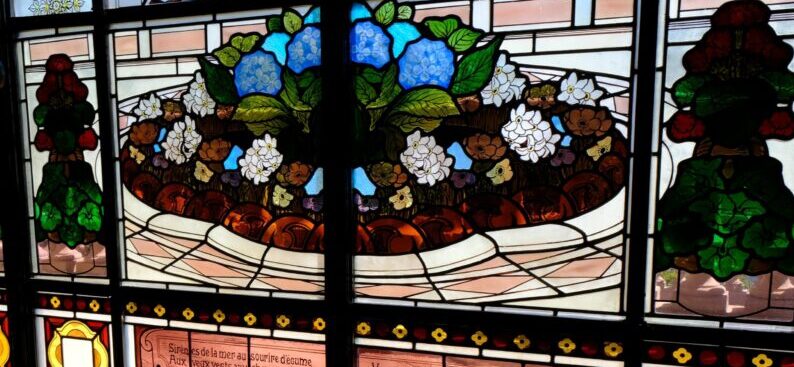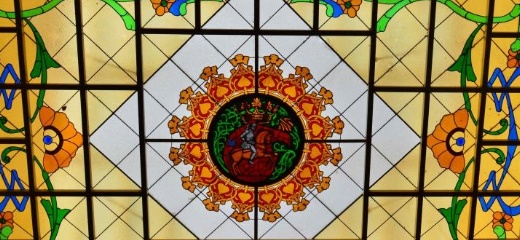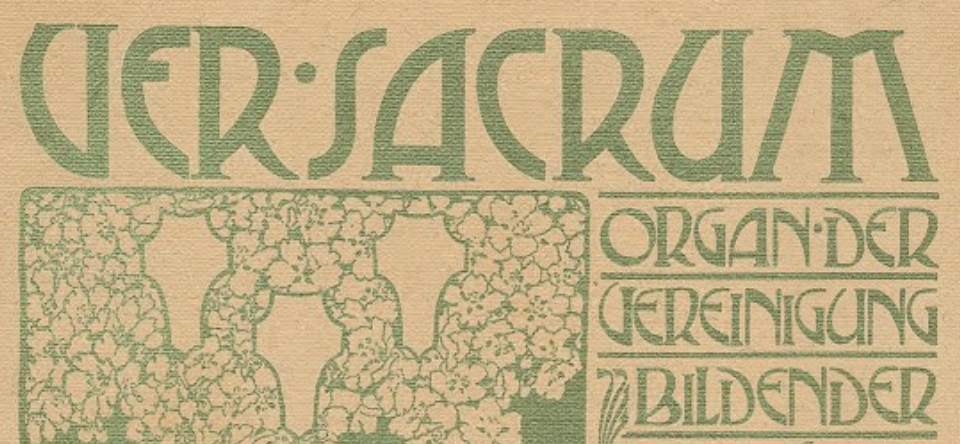We consider that the three main Jewellery Art Nouveau artisans were Catalan Lluís Masriera, and the two French Georges Fouquet and René Lalique. See some of their works in order to fully appreciate the artisan work that they incorporate:
Lluís Masriera:

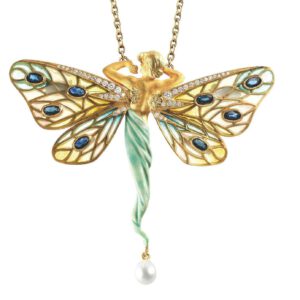

René Lalique:


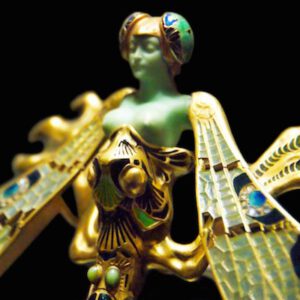

Lalique promoted the movement in France with his exquisite enamel and glass in addition to using horn in combination with moonstones and diamonds.
Georges Fouquet:
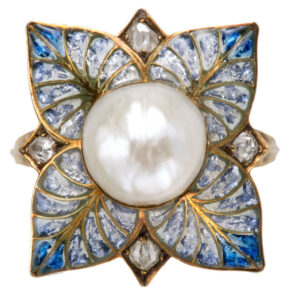



Lalique, Masriera and Fouquet are back. Organic aesthetic and the use of fragile materials such as moulded glass are making a comeback into jewellery, luxury and fashion. In the last decades, the cool geometric lines of Art Deco, modernism and minimalism
have dominated the taste but it looks like it is the time for Art Nouveau again.
Art Nouveau jewelry moved away from diamonds as a central stone and instead featured stones such as garnet, citrine, opal, moonstone, peridot, amethyst, agate and pearls. Techniques such as enameling were common, materials such as horn, shell, ivory, and copper offered new textures. Much of the jewelry made during the Art Nouveau times was made with silver, low-grade gold, and even steel. Because of the fragile glass and enameling techniques utilized during this period, fully intact Art Nouveau jewelry is rare to find and very valuable today.
Some motifs and distinctive elements of jewellery produced in this intensely creative period were:
- natural subjects: flowers, insects, birds
- female visage or silhouette with long, flowing hair
- curving, asymmetrical lines and designs
- enameling & plique à jour (stained glass effect)
- butterflies, dragonflies, swans, reptiles, snakes/serpents, orchids, irises, creepy/nightmarish things- bats, owls, vultures
- opals, amber, horn, aquamarines, amethyst, topaz, peridot, moonstones, chalcedony and ivory were often used; even glass…diamonds were used sparingly
The first revival of Art Nouveau was in the 1930\’s and thanks to the Surrealist artists that loved this art. In 1933, Salvador Dalí published an article in the Minotaure journal entitled \”On the Terrifying and Edible Beauty of Art Nouveau Architecture”, illustrated with photographs by Man Ray and Brassaï, devoted respectively to the work of Antoni Gaudí and Hector Guimard. There were other artists that also made Art Nouveau alive Finnish designer Alvar Aalto.
It was not until the 1960\’s that the second revival arrived. Two examples are the growing interest in flowing lines and abstract forms amongst furniture designers and also the psychedelic posters appeared in San Francisco in 1966. Art Nouveau quickly became fashionable and in the early 1970\’s interior designers did a few works that remembered the movement, like the wrought iron and the mirrors that Claude Lalanne designed for Yves Saint Laurent.
It looks that we are approaching the third revival of Art Nouveau. Nowadays, according to experts, Art Nouveau jewellery is more and more sold in Antique shops and auctions, but we can see flourishing artisans doing replicas and being inspired by Art Nouveau.
The most celebrated has to be René Lalique, better known for his glass but also a master designer of jewelry. René Lalique, Lluís Masriera and George Fouquet are back. A Fouquet bracelet of astonishing detail sold at auction in 1987 for more than $750,000, and some prices increased.
Other Art Nouveau Jewellers: Henri Vever and Henri Vever, along with his designers Eugene Grasset and Etienne Tourette serviced the upper echelons of society with ornate, extravagant combinations of diamonds, sapphires, rubies and emeralds, while also famous for their organic motif horn combs, plique-a-jour enamels and freshwater pearls.
Leading Art Nouveau jewellers produced exquisite pieces based on the natural world — wasps, flowers, fruits, dragonflies — crafted in innovative materials such as horn and enamel. The term \’organic\’ indicates any object whose characteristics is adapted to the demands of the body and mind of modern human person. It was a softer aesthetic, sandwiched between the icy monochrome of Belle Époque diamonds and the hard-edged Art Deco geometry that would dominate the 1920s and 1930s.
French designers looked abroad for inspiration. The Arts and Crafts movement, with its emphasis on hand craftsmanship, was alive in England, and Asian furniture with its highly detailed inlays and glossy finishes was gaining adherents. Insects such as dragonflies and butterflies were popular subjects, and half-draped nymphs with accents of pearl were another common theme.Tiny pieces of transparent stone or glass were often set together like a miniature leaded window, allowing for light to flow in from the back and illuminate the image. Proper execution of this art took great skill, as did the creation of guilloche designs, a painstaking method of engraving in a substance then overlaid with finish to create depth. Brilliantly colored cigarette cases in silver with guilloche inlays remain a popular collector\’s category to this day.
The Art Nouveau was a completely new style and it was more about making more with less. Jewellers styled fashionable pieces for their elite clients. Gold was used in most instances, with pastel colored inexpensive stones to accentuate as opposed to dominate the jewellery.
Art Nouveau period encompassed the years 1890 to just before World War I. Originating in France, it was a free-thinking time in which jewelry designers looked to break away from tradition. Original design mattered more than the intrinsic value of the materials, so precious and semi-precious stones and metals became less abundant.
Four recommended readings to get inspired by Art Nouveau Jewellery:
- A clear proof of the relevance that now has the Art Nouveau Jewellery is the Collecting Guide to Art Nouveau Jewellery that you can find in Christie\’s webpage. CLICK HERE to read the Christie’s Collecting Guide.
- To discover the main differences between Art Nouveau and Art Deco CLICK HERE, test your skills figuring out which of the displayed pictures belong to each movement.
- If you are in Pinterest, enjoy watching the examples of Art Nouveau Jewellery in our Pinterest account.
- Also, See some examples of Art Nouveau Jewellery in the Europeana Blog.
you know of other Art Nouveau great jewellers please comment this article or let us know by email at contact@artnouveau.club.


